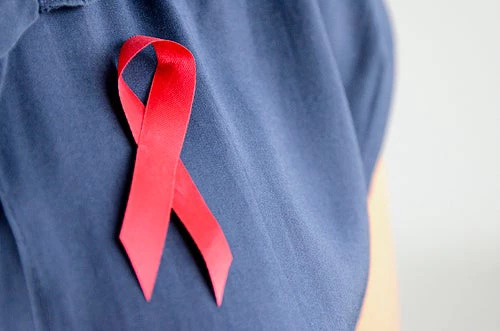As we honor World AIDS Day 2014, perhaps it is time to pause and take stock of the gains achieved over the last three decades by the extraordinary social movement that emerged across the globe to confront HIV.
While denial and stigma still lurk at the fringes, widespread progress has been made in the fight against the AIDS epidemic. Although today there are more than 35 million people living with HIV, UNAIDS data show that by June 2014, some 13.6 million people in need had access to antiretroviral therapy (ARV), a huge step towards ensuring that 15 million people have access by 2015.
This undoubtedly has contributed to the 35% reduction in AIDS-related deaths observed since their peak in 2005 and to quality-of-life improvements among HIV-infected people. Deaths due to tuberculosis, the leading cause of death among people living with HIV, have also fallen by 33% since 2004, and new HIV infections have dropped by 38% since 2001.
Although some people continue to argue that the unprecedented attention and funding for HIV have created a major imbalance in the global health agenda by reinforcing a “vertical program” orientation, we should remember that in previous decades, the reality of weak and under-resourced health systems in most of the world and limited access to basic health services for the majority of the population were common phenomena before the AIDS response.
This reality has been made evident again with great clarity by the current Ebola outbreak in West Africa.
Significant investment in health systems in low- and middle-income countries have been made over the last decade, for scaling up HIV prevention and clinical care as well as for integrated care approaches for tuberculosis and HIV. Given this, I think it is good to ask how we could advance universal health coverage, leveraging the resources, experience and models of existing HIV and AIDS prevention and treatment programs to manage other chronic health conditions.
As discussed in recent papers (HIV and Noncommunicable Disease Comorbidities in the Era of Antiretroviral Therapy: A Vital Agenda for Research in Low- and Middle-Income Country Settings, HIV, Tuberculosis, and Non-communicable Diseases: What Is Known About the Costs, Effects, and Cost-effectiveness of Integrated Care? ), this is an important point to keep in mind since HIV-infected individuals are now not only living longer as a result of the expansion of antiretroviral therapy programs, but are also developing chronic, non-communicable diseases (NCDs), such as cardiovascular diseases and cancer, due to a mix of chronic immune activation, medication side effects, co-infections, and the aging process itself.
Botswana, one of the countries hardest hit by HIV, and a leader in the AIDS response in Southern Africa, offers a good example of how governments could leverage HIV and AIDS services and programs to integrate and add NCD prevention and treatment into existing services and programs to integrate and expand access to services for other priority health conditions.
Faced with resource limitations that have hindered the expansion of cytology laboratory-based screening for cervical cancer--one of the leading causes of premature death among women, particularly those who are HIV-positive—the government of Botswana started to introduce at AIDS clinics in 2013, lower-cost but equally effective “see and treat” screening procedures, along with cryotherapy to destroy abnormal tissue in the cervix by freezing it.
This approach will help overcome the current limited laboratory screening capacity for cervical cancer which results in a significant number of patients diagnosed with advanced or terminal stage disease. Since the high incidence of cervical cancer in Botswana is linked to a sexually transmitted infection caused by the human papilloma virus, the targeted use of HIV prevention interventions -- such as the promotion of safe sex, use of condoms, avoiding harmful use of alcohol, and male circumcision -- are also likely to help prevent cervical cancer, along with HPV vaccination for school-age girls. Such vaccinations began to be rolled out in 2013 as part of the country’s Expanded Program for Immunizations.
Additional investments are being made to improve cervical cancer data collection in health facilities as part of the development of an electronic health information system being rolled out across Botswana, as well as to support the establishment of a national cancer registry.
These system-wide measures show that it is possible to continue supporting investments and activities to achieve the ambitious goal of ending the AIDS epidemic, while building integrated health services delivery platforms to cover a wide array of diseases with similar prevention and care needs, including palliative care. This approach will also help capitalize on existing resources and capabilities, facilitate task-shifting among personnel and the use of common procurement and supply lines for getting essential drugs and other materials to health facilities, and introduce and scale up the use of new technologies, such as mobile phones and integrated health information systems.
Linking health spending decisions to adoption of clinical guidelines for service provision would further encourage coordination of care and improve the quality of services.
The important catalytic role that the HIV and AIDS response has played in the development of a robust global health agenda and increased funding for health programs over the last decade needs to be acknowledged. But it should also be recognized that supporting the development and strengthening of health systems in the future under the universal health coverage agenda -- including stronger primary health care networks, integrated chronic care services delivery and community-based interventions that focus on the person as a whole rather than on disease categories -- will facilitate opportune access to quality health services for all.
Follow the World Bank health team on Twitter: @worldbankhealth
Related:
2014 Progress Report on the Global Plan
HIV and Noncommunicable Disease Comorbidities in the Era of Antiretroviral Therapy: A Vital Agenda for Research in Low- and Middle-Income Country Settings
HIV, Tuberculosis, and Non-communicable Diseases: What Is Known About the Costs, Effects, and Cost-effectiveness of Integrated Care?
The challenge of non-communicable diseases and road traffic injuries in Sub-Saharan Africa: An overview



Join the Conversation